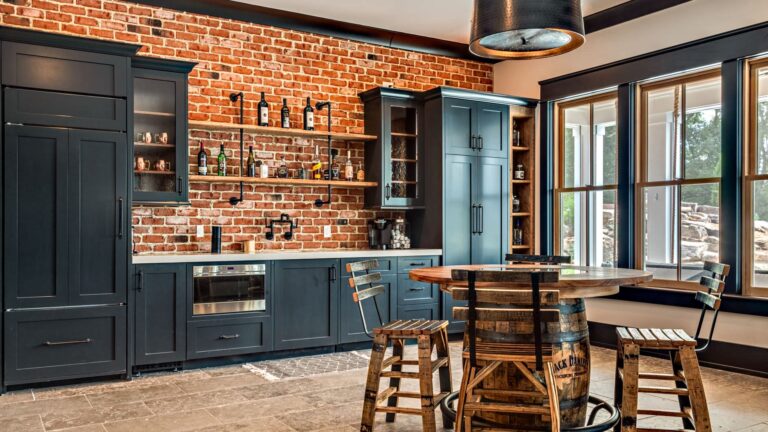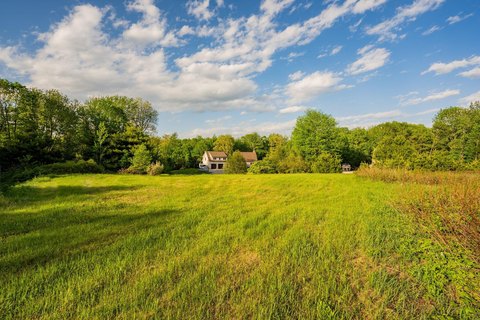It was a crisp autumn morning when Mark and Laura drove to the 50-acre farm just 30 miles outside the city. As they turned onto the long gravel driveway, they were greeted by rows of apple trees, a sprawling meadow, and the distant sound of cattle grazing. For years, they had dreamed of escaping the hustle and bustle of suburban life. Now, with the increasing ability to work remotely, their dream of owning a farm has moved from fantasy to a genuine possibility. With its red barn and farmhouse in the woods, this farm felt like a step into a more straightforward, more fulfilling way of life.
Like Mark and Laura, many people across the country search for farms for sale near me as they explore a lifestyle shift toward rural living. Whether motivated by a desire for more space, a passion for sustainable agriculture, or the allure of owning land, the farm market has seen a significant uptick in demand over the past few years. This article dives into the current trends in the market for farms for sale, examines vital statistics, and explores why so many are opting for a life rooted in the land.
- A Surge in Interest: The Growing Demand for Farms
The past decade has seen an increasing demand for rural properties, with farms being one of the most sought-after categories. The COVID-19 pandemic was a major catalyst for this trend, as people reevaluated their lifestyles, priorities, and living environments. With remote work becoming more common, city dwellers sought refuge in the countryside, sparking a notable shift in the real estate market.
According to a report by Savills, demand for rural properties in the United States rose by 40% between 2020 and 2022, with farms and smallholdings being prevalent. Buyers are seeking more significant properties with arable land for farming and smaller hobby farms where they can grow food, raise livestock, and enjoy a more self-sufficient lifestyle. (Source: Savills U.S. Rural Property Market Report, 2023)
Additionally, the shift to rural living is broader than retirees or those seeking a slower pace. Many younger families, millennial professionals, and entrepreneurs opt to buy farms to engage in sustainable agriculture, eco-tourism, or agribusiness ventures. The rise of farmers’ markets, organic farming, and farm-to-table dining has made farming an attractive lifestyle for a new generation of buyers.
- The Price of Farmland: What to Expect
One of the biggest questions prospective buyers have when searching for farms for sale near me
is how much they can expect to pay. Farmland prices vary widely based on location, soil quality, proximity to urban centres, and existing infrastructure like barns, irrigation systems, and homes.
As of 2023, the average price of agricultural land in the United States was around $4,000 per acre, according to USDA data. However, this number can fluctuate depending on the region. For example:
- Midwestern states such as Iowa and Illinois, known for their fertile soil and established farming infrastructure, often see higher prices, with some areas averaging over $10,000 per acre.
- Southern states like Kentucky and Tennessee offer more affordable options. Farmland typically costs between $3,500 and $6,000 per acre.
- In coastal or peri-urban areas, where proximity to large cities increases demand, farm prices can easily exceed $15,000 per acre. This is particularly true in states like California or New York, where arable land near metropolitan regions is highly coveted. (Source: USDA 2023 Farmland Values Report)
- Popular Types of Farms for Sale
The type of farm you’re interested in will largely dictate your budget, location, and long-term plans. When looking for farms for sale “near me,” it’s essential to know the different types of farms available on the market.
- Hobby Farms are smaller farms, often between 5 and 40 acres, purchased primarily for recreational purposes or small-scale agricultural production. They are ideal for those who want to grow vegetables, raise a few animals, or enjoy the benefits of rural living without the pressures of running a full-scale commercial operation.
- Commercial Farms: These farms are designed for larger-scale production, whether for crops like corn and soybeans or livestock like cattle, pigs, and poultry. Commercial farms often range from 100 to several thousand acres. The land is usually optimized for productivity with irrigation systems, silos, barns, and farming equipment.
- Organic and Sustainable Farms: With the rising demand for organic produce and sustainable farming practices, more farms are being developed with eco-friendly goals. Organic farms must adhere to strict guidelines set forth by agencies such as the USDA Organic Program, and buyers interested in this type of farm should consider the additional certifications required to market their products as organic.
- Equestrian Farms: Equestrian properties are popular among horse enthusiasts and those in the equine industry. These farms are equipped with barns, paddocks, and stables and may include riding arenas and trails. Depending on location, equestrian farms can range from 10 to 200 acres, with prices reflecting the amenities and land quality.
- Challenges of Farm Ownership
Owning a farm comes with numerous rewards, but it’s challenging. For many first-time buyers, the romanticized notion of living off the land can be tempered by the realities of farm management.
- Maintenance and Infrastructure: Farms, particularly older ones, require regular upkeep. Buildings such as barns, fences, irrigation systems, and wells need consistent maintenance, which can be costly. Buyers should factor these ongoing costs into their budgets.
- Labour and Time Commitment: Even smaller farms require significant labour, whether tending to animals, maintaining crops, or managing the property’s daily operations. This can be a time-intensive endeavour, particularly for those without farming experience.
- Climate and Environmental Factors: Farming depends on weather patterns and soil quality. Climate change has introduced new challenges, such as unpredictable weather events and droughts, which can impact crop yields and livestock health. Before purchasing a farm, it’s crucial to understand the local climate and its implications for farming.
- The Role of Technology in Modern Farming
The farming landscape has evolved considerably over the past decade, with technology significantly improving efficiency and sustainability. Integrating modern technology into farms today can provide a significant advantage for those purchasing them.
- Precision Agriculture: Technologies like GPS-guided tractors, drones, and sensors that monitor soil moisture and crop health are transforming how farms operate. These advancements allow farmers to maximize productivity while minimizing environmental impact. According to AgFunder News, precision agriculture technology reduces water usage by 20% and increases crop yields by 15%, making it a valuable investment for farm owners. (Source: AgFunder, 2023 Precision Farming Report)
- Renewable Energy: Many modern farms also use renewable energy sources like solar and wind power to reduce costs and improve sustainability. Farmers can reduce reliance on traditional energy sources by installing solar panels or wind turbines and potentially sell surplus energy back to the grid.
- Investing in the Future: Why Buy a Farm?
For many buyers, purchasing a farm isn’t just about the land—it’s about investing in a way of life and securing a sustainable future. With the increasing focus on local food production, sustainable living, and environmental stewardship, farms offer a unique opportunity to contribute to a more resilient food system.
According to a 2022 report by The Land Trust Alliance, interest in sustainable and organic farming has grown by 25% over the last decade, with many young people and urban professionals seeking careers in agriculture. This shift is fueled by a desire for healthier food systems, environmental consciousness, and a sense of community connected to the land. (Source: The Land Trust Alliance, 2022 Sustainable Agriculture Trends Report)
Conclusion:
For Mark and Laura, the decision to purchase their farm was about more than just owning land—it was about embracing a lifestyle that allowed them to grow their food, raise animals, and enjoy the peace and beauty of rural living. Whether you’re looking for a hobby farm, a commercial operation, or a place to raise your family away from the city, the market for farms for sale offers endless possibilities. By understanding the types of farms available, their costs, and the challenges involved, you can find the perfect property that suits your dreams of rural living.















